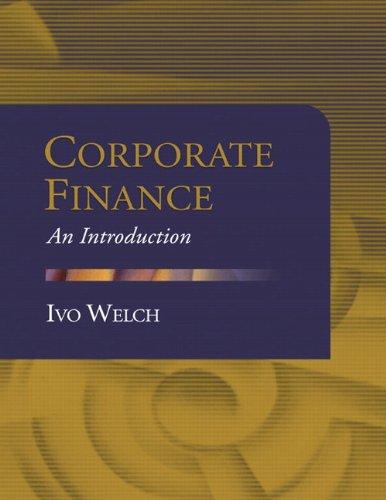This is a certainty equivalence question. Although it is not a gift per se, you cannot assume
Question:
This is a certainty equivalence question. Although it is not a gift per se, you cannot assume that $10,000 is a fair market value, so that you can compute a rate of return of 1,900%—after all, it is your uncle trying to do something nice for you. There are four outcomes:
Plug this into the formula and find Cov(˜P, ˜rM) = 1/4 .
$150,000 . (−21%) + (−$50,000) . (7%) +
(−$50,000) . (7%) + (−$50,000) . (7%)
= −$10,500. We also need to determine the variance of the market. It is Cov(˜rM, ˜rM) = [(−21%)2 + (7%)2 + (7%)2 + (7%)2]/4 = 147%% (which incidentally comes to a standard deviation of 12% per annum—a bit low.) With the risk-free rate of 6%, lambda (λ)
in Formula 9.2 is (11% − 6%)/147%% ≈ 3.4. You can now use the certainty equivalence formula: The expected value of the Ferrari gift is $50,000. If it were a safe payoff, it would be worth $50,000/1.06 ≈
$47,169.81. Because you get more if the rest of your portfolio goes down, the Ferrari gift is actually great insurance for you. You value it 3.4 . ($10,500)/1.06 ≈ $33,679.25 above its risk-free equivalent of $47,169.81: This Ferrari is therefore worth $80,849.06. You have to pay $10,000 today, of course, so you have managed to secure a deal that is worth $70,849.06.
Step by Step Answer:






